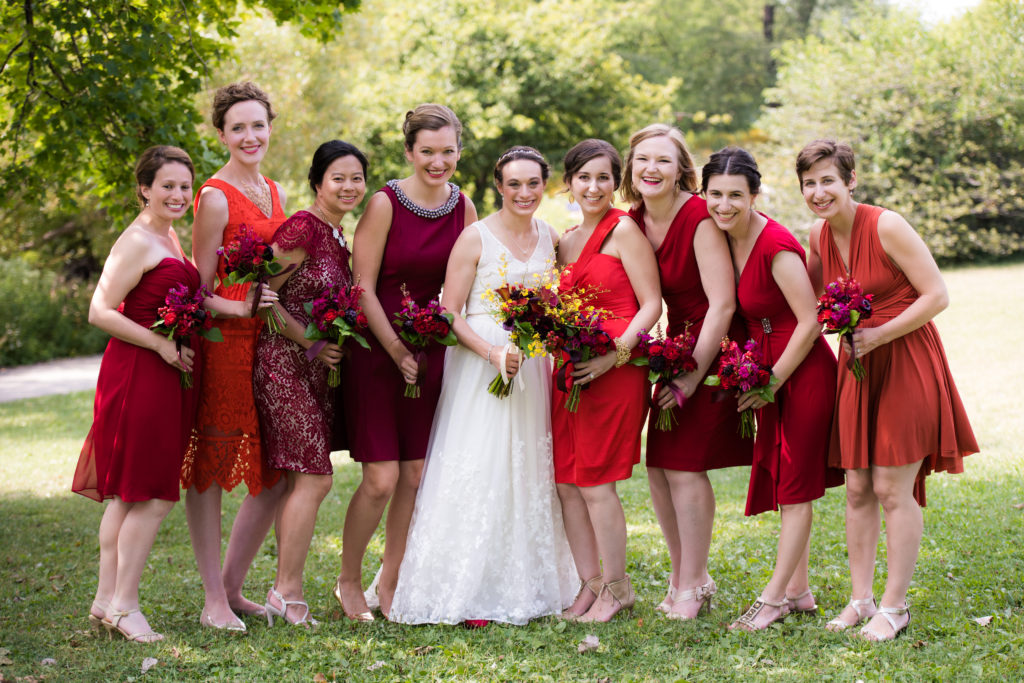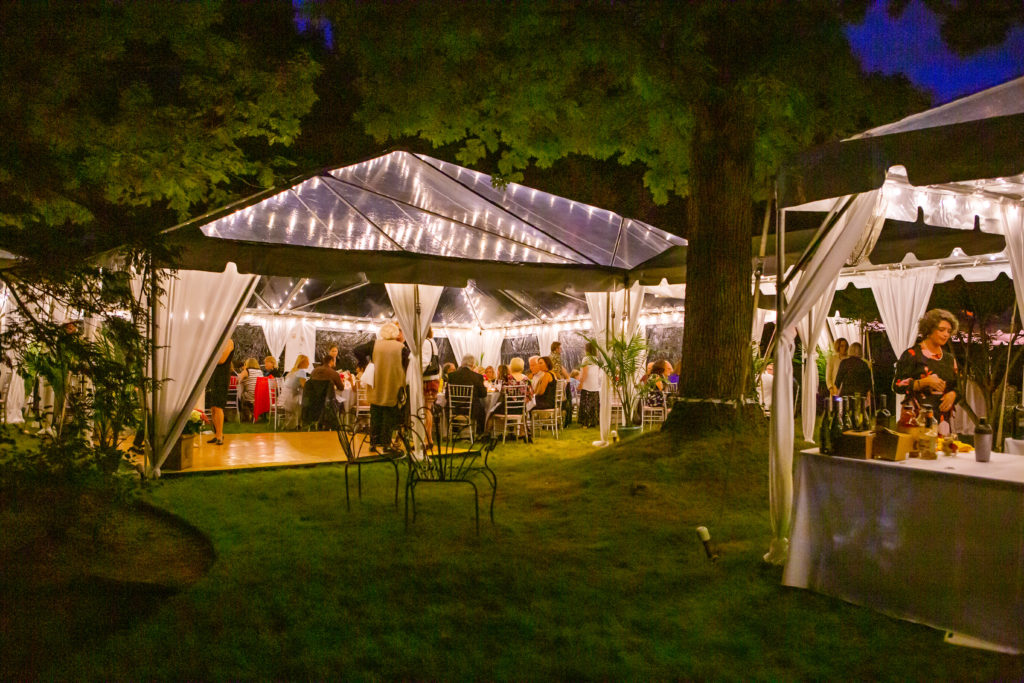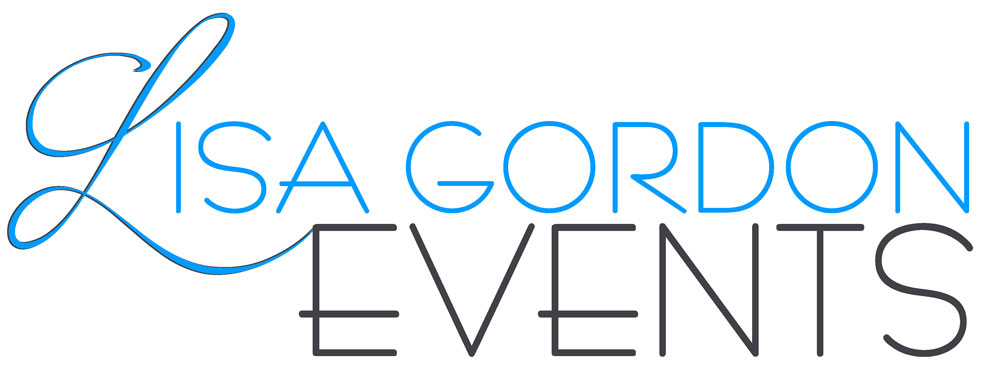Nov 26, 2019 | Weddings

Who wouldn’t want to post this wonderful photo on social media?
Photo by Gold Grid Studios
Among my clients, the one thing everyone wants is a good photographer. (Fortunately, I know many wonderful photographers!) Because I’m not a big photography person, myself, this has gotten me thinking about how wedding photography has evolved over time–and why it has done so.
A few years ago, I saw my parents’ wedding photos for the first time. They got married in the 1950s. Think about it: I had never seen those pictures growing up and only saw them when I was an adult, and then it was almost by accident. There were a few dozen (because film was in rolls of 12) small black-and-white photos. By today’s standards, they really weren’t very good! The only wedding photo I had ever seen before of my parents’ was the one taken of my mother in her wedding dress in a photographer’s studio. As I recall, that was the picture that was used with the engagement announcement in her hometown paper. I had heard lots of stories about the wedding, but really had no visuals.
I have exactly one photograph from either of my grandparents’ weddings in the early 20th century. There’s a wonderful 8×10 black-and-white photo of my grandmother in her wedding gown and full-length veil flanked by her two bridesmaids (her sister and future sister-in-law). This was also pretty clearly a staged photo taken before the wedding.
Fast forward to my own wedding about 15 years ago. Maybe it’s because my parents’ photos (or lack thereof) had set up this expectation for me, we didn’t have a wedding photographer. (Remember, I hadn’t even seen my parents’ wedding photos then.) We had a couple of guests who were excellent amateur or semi-professional photographers who were happy to take a lot of photos for us, and we got some nice shots. They gave them to us as prints, negatives, and/or slides. We got maybe 150 photos total. I made a little album and I haven’t looked at it in a decade.
When I got married, digital cameras were pretty new, and most people still had film cameras. In the ensuing years, 95% of photography has gone digital. And what this has done is made it possible to have 1,000 or more photos from every wedding. Digital photos also mean that people are much more used to both being photographed and seeing themselves in the photo immediately. The result is that people in general are much more practiced at being photographed. And they seem to like it more, too. So, wedding photography has exploded, and getting good photos is one of the goals of a good wedding.
And then there’s social media. Having the ability to share your photos immediately with your friends or your world makes having them ever so much more valuable. And weddings–well, what could be more beautiful, exciting, or Instagramable than your wedding?
The other thing that has happened due to this change in photography is the increased demand for professional hair and make-up services. After all, if you’re going to be photographed all day for public consumption, a lot of people want to put their best face on. I’m pretty sure my mother and grandmother did their own make-up before their weddings. Today, that’s almost never even considered.
So, in my lifetime, wedding photography has gone from being a sort of a nice luxury that resulted in a small handful of photos to an absolute necessity so that the people getting married can have 1,000 gorgeous, artistic photos to splash all over the internet. I have to wonder what is next. Whatever it is, I know that wedding photographers are going to be right there in the middle of it.
Nov 11, 2019 | wedding planning

Photo by Maia Rosenfeld Photography.
Here’s something I’ve been ruminating about for rather a long time: What, exactly, is “day-of coordinating”? For some context, there are a lot of discussions in planner circles about what it is, what it isn’t, and whether or not it even exists. Let me assure you that, no matter what some planners say, it really does exist and some of us are still doing it.
I completely understand the point of view of some planners when they say that it’s not a real thing. They are saying (if they will allow me to put words in their mouths) that no one ever walks into a wedding to coordinate it without putting in a certain amount of planning time in advance. Or, maybe, some people do do that, but I can’t imagine that it ever turns out very well. The reality is that if I’m coordinating a wedding, I am doing a certain amount of the actual planning.
For the last several years, I’ve noticed that a lot of planners like to call it “month-of coordinating.” This is a nod to the fact that the coordinator is probably going to be involved in the wedding for the last four to six weeks before the wedding day (even though the actual coordinating is really only on the day! But I digress.)
And what happens in those few weeks? What does the coordinator actually do? Well, let’s say you’re planning a wedding and you have found all your own vendors (yay!) and figured out all your own decor (good job!) and you even have an idea of what the timeline of the day is (you’re ahead of the pack!)
Then you hire me to coordinate. The first thing I have to do is get all that information about your plans from you. You send me your vendor contracts, your lists of decor items, and probably a lot of other things. We also do a walk-through at your venue with your caterer, where I ask a lot of questions and listen to everything being said to get the full picture of your plans. On the outside, it may not look like I’m doing much, but in my head, I’m constructing a full picture of your wedding day and of every single thing that has to happen. I’m writing down the timeline details, and I am looking for places where problems might occur.
And that is just the beginning. After that, I talk to each and every one of your vendors to make sure that we all have the same understanding and to see what they need in order to do their jobs. Make-up artists need chairs and tables; musicians and DJs need electricity and protection from the weather; bakeries need refrigerator space; and so on. These are things that don’t sound like much, but they make a surprisingly large difference in how smoothly your wedding day goes. Other vendors also notice where there may be problems that affect their work, and we often spend some time figuring out how to prevent those problems.
So, is that just coordinating? No, it is actually planning your wedding. In fact, it’s by far the most complex part of planning your wedding. Finding vendors is easier (if much more time-consuming). Planning decor is easier. Even budgeting is easier. These nuts-and-bolts logistics are the hardest part of planning. And they are what I do when I am “just coordinating” your wedding.
So, why do I do it? Because putting together all the pieces of your vision and making it come to life are my very, very favorite parts of this job. Turning your dream into reality is a thrill that is unlike any other. I keep doing Day-of Coordinating, with all it entails–because I like it and because I know that I am helping you do something that would be much harder otherwise.
So, no matter what you hear from other planners, there is such a thing as day-of coordinating, and it’s an important service for everyone who is planning a wedding.



Recent Comments